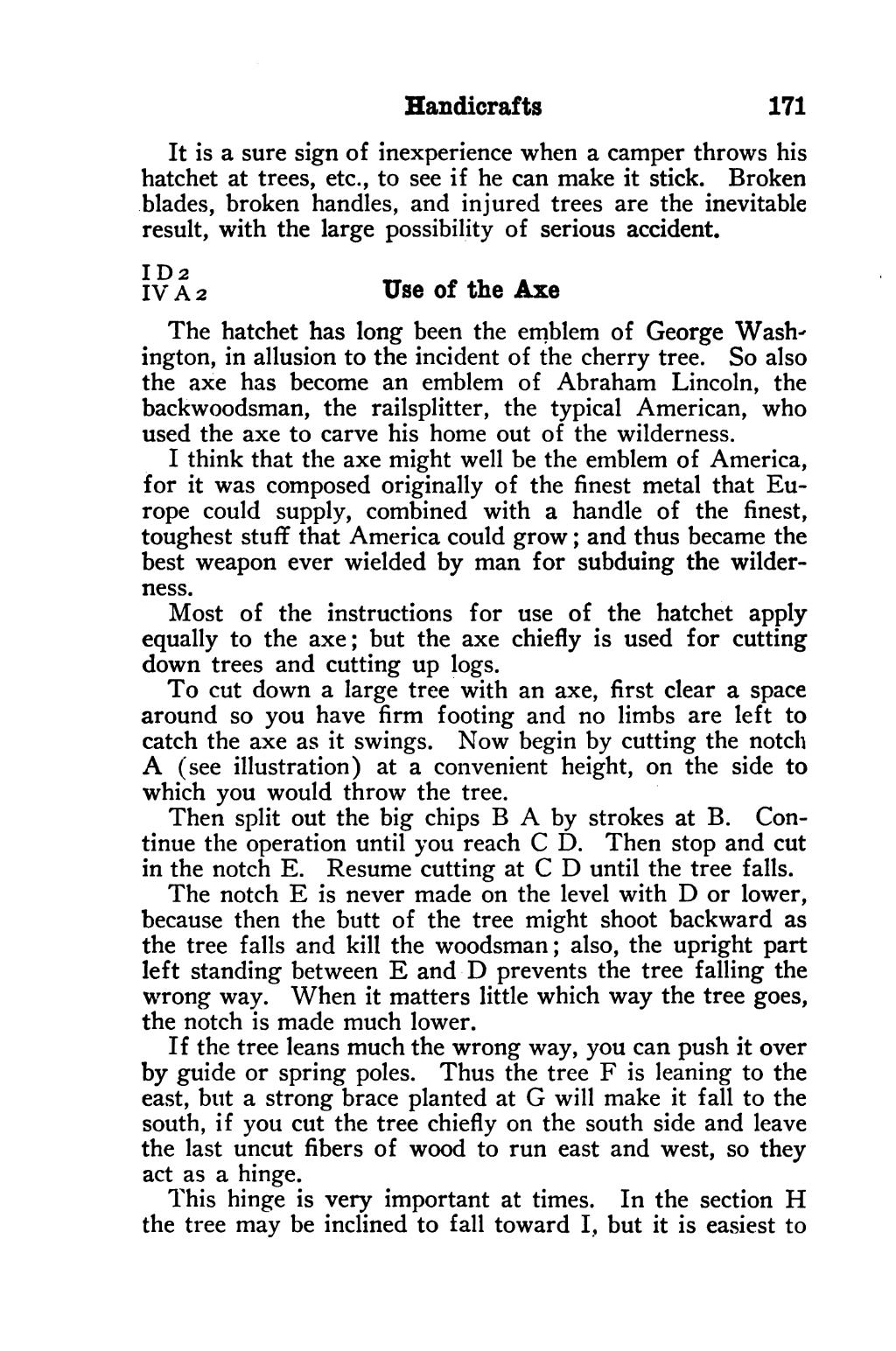Handicrafts 171 It is a sure sign of inexperience when a camper throws his hatchet at trees, etc., to see if he can make it stick. Broken blades, broken handles, and injured trees are the inevitable result, with the large possibility of serious accident. ID IVA2 Use of the Axe The hatchet has long been the emblem of George Wash- ington, in allusion to the incident of the cherry tree. So also the axe has become an emblem of Abraham Lincoln, the backwoodsman, the railsplitter, the typical American, who used the axe to carve his home out of the wilderness. I think that the axe might well be the emblem of America, for it was composed originally of the finest metal that Eu- rope could supply, combined with a handle of the finest, toughest stuff that America could grow; and thus became the best weapon ever wielded by man for subduing the wilder- ness. Most of the instructions for use of the hatchet apply equally to the axe; but the axe chiefly is used for cutting down trees and cutting up logs. To cut down a large tree with an axe, first clear a space around so you have firm footing and no limbs are left to catch the axe as it swings. Now begin by cutting the notch A. (see illustration) at a convenient height, on the side to which you would throw the tree. Then split out the big chips B A by strokes at B. Con- tinue the operation until you reach C D. Then stop and cut in the notch E. Resume cutting at C D until the tree falls. The notch E is never made on the level with D or lower, because then the butt of the tree might shoot backward as the tree falls and kill the woodsman; also, the upright part left standing between E and D prevents the tree falling the wrong way. When it matters little which way the tree goes, the notch is made much lower. If the tree leans much the wrong way, you can push it over by guide or spring poles. Thus the tree F is leaning to the east, but a strong brace planted at G will make it fall to the south, if you cut the tree chiefly on the south side and leave the last uncut fibers of wood to run east and west, so they act as a hinge. This hinge is very important at times. In the section H the tree may be inclined to fall toward I, but it is easiest to
Stránka:roll 1931.djvu/187
Z thewoodcraft.org
Tato stránka nebyla zkontrolována
